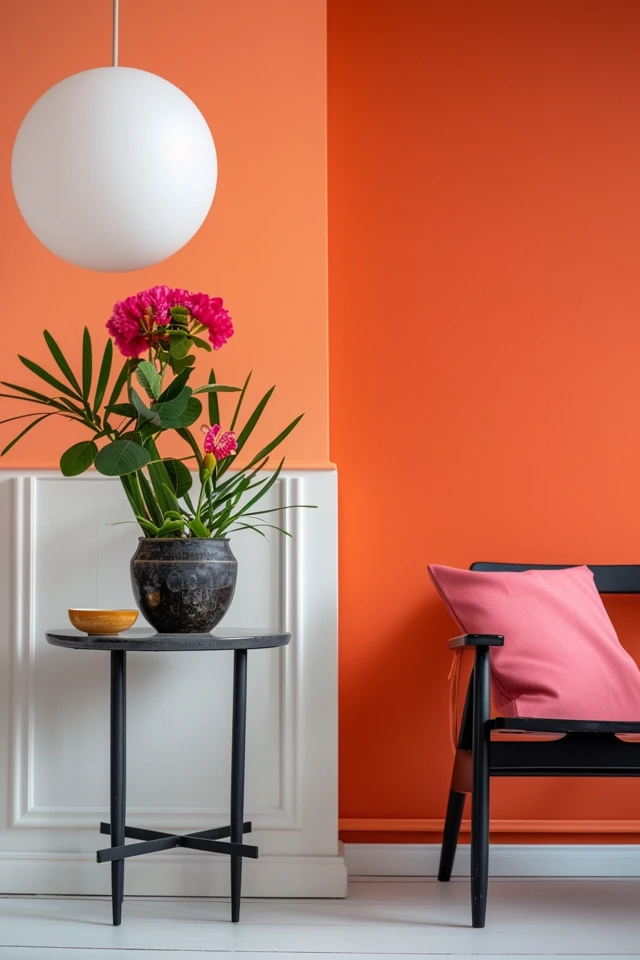In this article, I will share some valuable tips and techniques for transforming flat paint into a glossy finish. Whether you want to add a touch of shine to your walls or give new life to your old furniture, these DIY glossy paint tips will help you achieve the desired results.
Enhancing the paint sheen can completely change the look and feel of a room, creating a shiny paint surface that catches the eye. By following these glossy paint techniques, you can easily transform your flat paint into a high-gloss masterpiece.
Key Takeaways:
- Experiment with mixing Future with acrylic paint to achieve a glossy finish.
- Find the right balance of Future for each color, as adding too much can make the paint transparent.
- Consider using other additives to enhance the gloss of the paint.
- Environmental conditions and aging can impact the final result, so take them into account.
- Measure gloss in paints and coatings using a glossmeter to assess the level of reflectivity.

Understanding Gloss in Paints and Coatings
Gloss is an essential characteristic of paints and coatings, determining the level of reflectivity the paint film exhibits. It plays a significant role in the overall visual appearance and aesthetic appeal of a product. Different types of paint finishes offer varying levels of reflectivity and visual appeal, allowing for diverse design possibilities.
There are several types of paint finishes to choose from, including:
- High Gloss: Offers the most reflective and shiny surface, creating a mirror-like effect.
- Gloss: Provides a bright and polished look with a noticeable sheen.
- Semi-Gloss: Offers less shine than gloss finishes, striking a balance between glossy and matte appearances.
- Satin: Delivers a smooth finish with a subtle sheen, offering a luxurious appearance.
- Eggshell: Provides a soft, velvety finish, perfect for creating a warm and inviting atmosphere.
- Flat/Matt: Offers a non-reflective surface, ideal for hiding imperfections and creating a modern, minimalist look.
Gloss enhancement and retention in coatings can be influenced by various factors. Surface roughness, additives, pigment concentration, dispersibility, and particle size and distribution all play a role in determining the level of gloss achieved. Understanding and managing these factors is essential for maintaining long-term gloss performance.
To measure the gloss of paints and coatings, a glossmeter is commonly used. This instrument quantifies the level of reflectivity on a scale from 0 to 100. A value of 0 represents no gloss or reflectivity, while 100 represents a perfectly mirror-like finish. This measurement is crucial for quality control purposes and ensures consistency in gloss levels across different products and batches.
Overall, understanding gloss and its variations in paints and coatings allows for informed decisions on choosing the most appropriate finish for specific applications. It also facilitates the implementation of effective gloss enhancement and retention strategies, ensuring products maintain their visual appeal over time.

The Best Way to Make Matte Tiles Glossy
If you have matte tiles that you want to transform into glossy ones, the best approach is to use a high gloss tile sealer specifically designed for this purpose. Trying common DIY methods like vinegar, baking soda, bleach, ammonia, or wax may actually damage the tiles or require time-consuming application processes. Moreover, standardized glossy tile sealers available in most stores often have lower concentrations of active ingredients and may not be suitable for dense, glazed, non-porous tiles like ceramic and porcelain.
For optimal results, I recommend using the GlazeGuard tile sealer, a high gloss tile sealer that is formulated with a high percentage of active solids. This specialized sealer is perfect for achieving a glossy finish on matte floor tiles and provides a durable and stain-resistant protective layer. To apply the high gloss tile sealer, start by properly prepping the surface, which involves cleaning and stripping any previous sealers. Then, carefully apply the sealer to the tiles, following the manufacturer’s instructions for the best outcome.
To maintain the glossy finish and extend the lifespan of your sealed tiles, it’s important to clean them regularly using microbial cleaners. Harsh chemicals can potentially damage the surface, so it’s best to avoid them. Additionally, refrain from scraping the tiles with stainless steel tools, as this can cause scratches. By following these maintenance practices, you can enjoy the beauty and shine of your glossy tiles for years to come.


